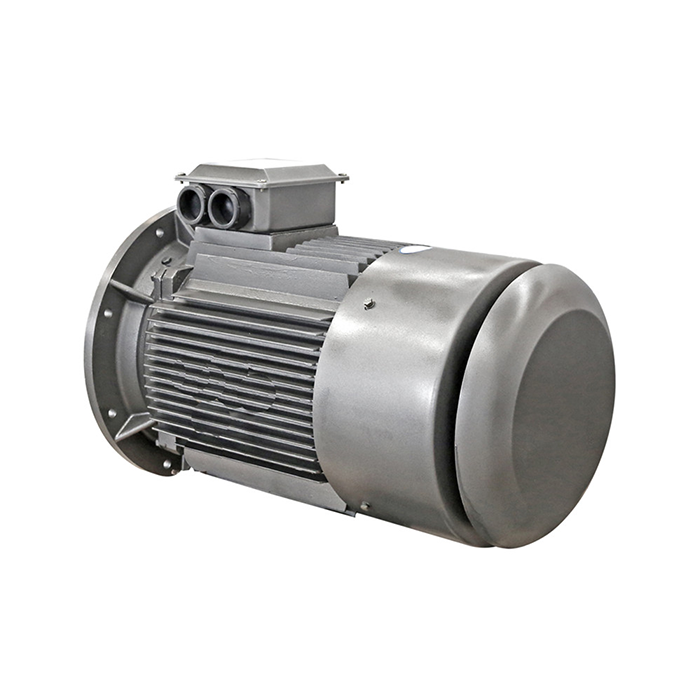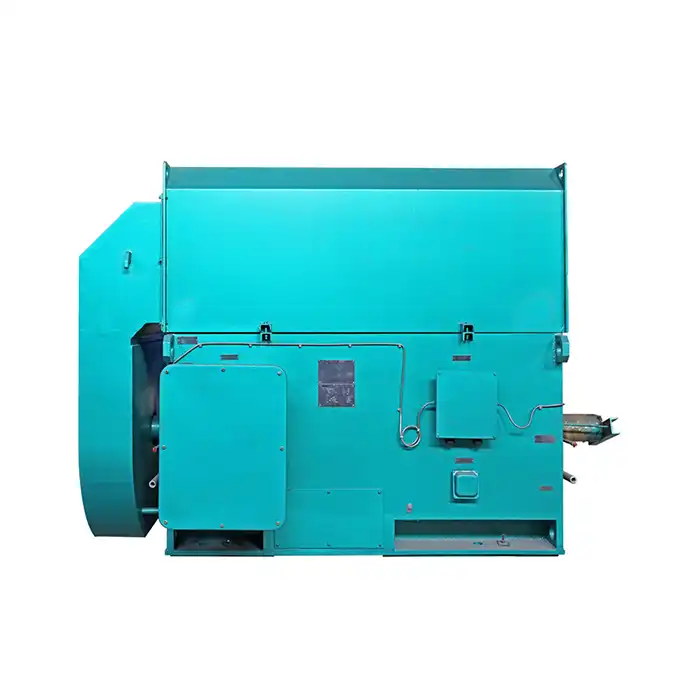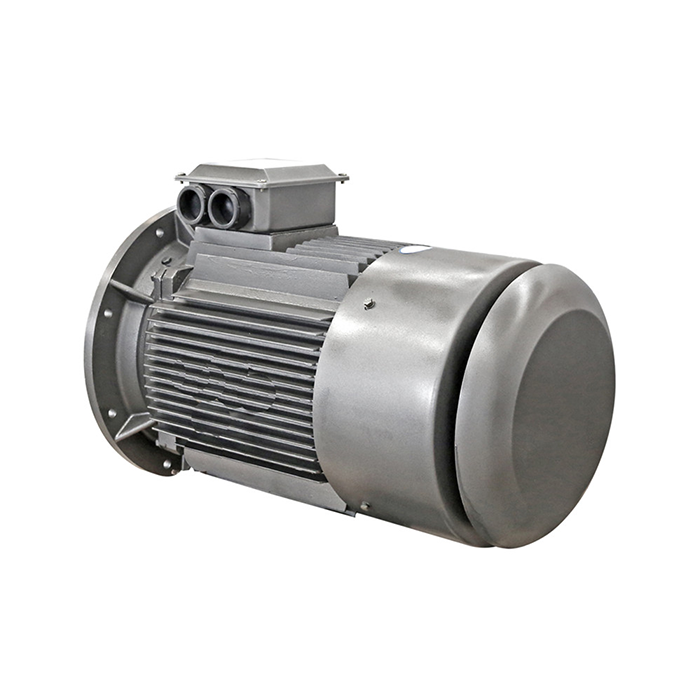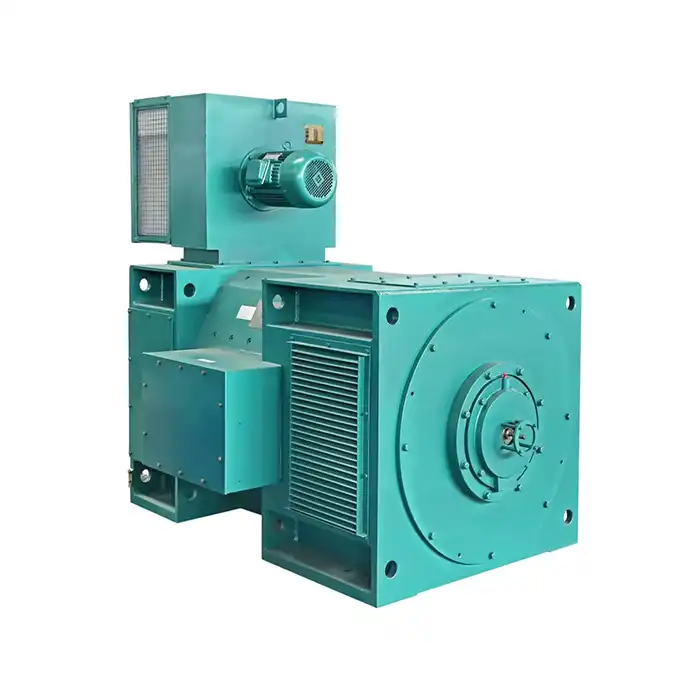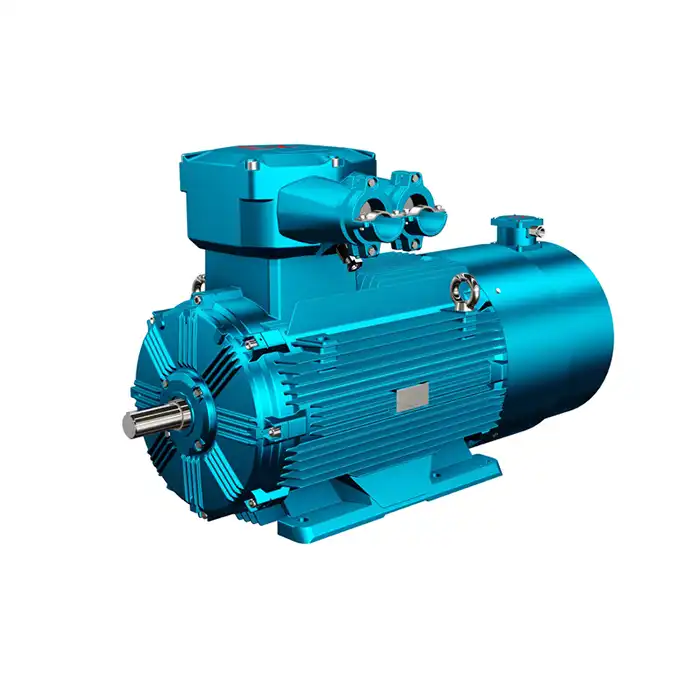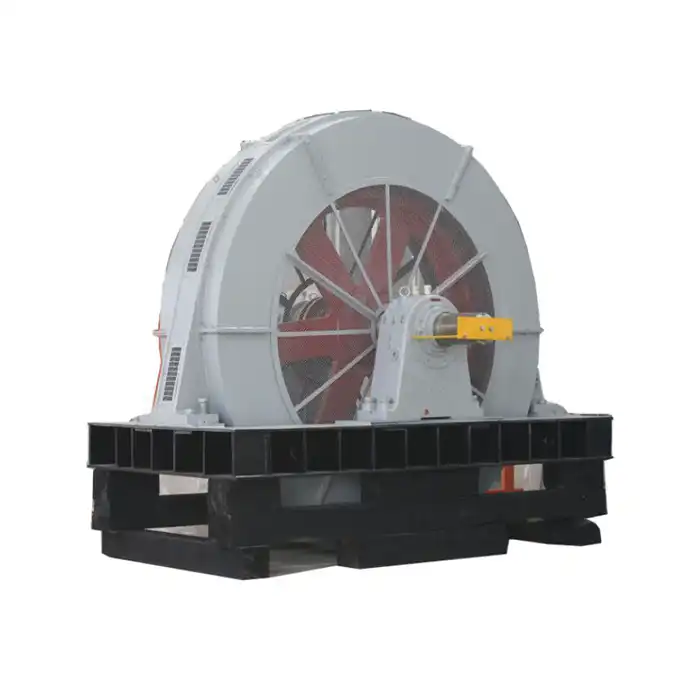Understanding magnetic saturation in motors
Magnetic saturation occurs when increasing the magnetizing force no longer results in a proportional increase in magnetic flux density within a ferromagnetic material. This phenomenon has significant implications for motor performance, particularly in high-efficiency designs like IE 5 motors.
The basics of magnetic circuits in motors
Electric motors rely on magnetic circuits to convert electrical energy into mechanical energy. These circuits consist of ferromagnetic materials, such as the motor's stator and rotor cores, which provide a path for magnetic flux. The relationship between the magnetizing force (H) and the resulting magnetic flux density (B) in these materials is nonlinear, leading to the phenomenon of saturation.
Effects of saturation on motor performance
As a motor approaches magnetic saturation, several performance aspects are affected:
- Reduced efficiency: Saturation leads to increased core losses, reducing overall motor efficiency.
- Decreased torque production: The nonlinear relationship between current and torque becomes more pronounced in saturated conditions.
- Increased heating: Higher core losses result in additional heat generation within the motor.
- Power factor reduction: Saturation can lead to a decrease in the motor's power factor, affecting overall system efficiency.
Challenges specific to IE5 motors
IE 5 motors, known for their superior efficiency, face unique challenges when it comes to magnetic saturation:
- Higher flux densities: To achieve improved efficiency, IE 5 motors often operate at higher flux densities, bringing them closer to saturation points.
- Material limitations: The use of advanced magnetic materials in IE 5 motors may introduce different saturation characteristics compared to conventional designs.
- Balancing act: Designers must carefully balance the need for high efficiency with the risk of saturation-induced performance degradation.
IE5 design innovations to mitigate saturation
To address the challenges posed by magnetic saturation, IE 5 motor designers have developed innovative approaches to maintain high efficiency while minimizing the negative impacts of saturation.
Advanced magnetic materials
The use of cutting-edge magnetic materials is a key strategy in mitigating saturation effects in IE 5 motors:
- High-performance silicon steel: Advanced grades of silicon steel with improved magnetic properties help push the saturation point higher.
- Amorphous metal alloys: These materials offer higher saturation flux densities and lower core losses compared to traditional silicon steel.
- Nanocrystalline materials: Emerging nanocrystalline soft magnetic materials show promise in further improving saturation characteristics.
Optimized magnetic circuit design
Careful design of the magnetic circuit is crucial for managing saturation in IE 5 motors:
- Flux path optimization: Designers use advanced simulation tools to optimize the geometry of stator and rotor cores, minimizing areas prone to saturation.
- Lamination thickness: Thinner laminations help reduce eddy current losses and improve the overall magnetic circuit performance.
- Airgap design: Careful consideration of airgap dimensions and geometry can help distribute flux more evenly, reducing localized saturation.
Innovative winding configurations
Novel winding designs can help manage magnetic saturation in IE 5 motors:
- Distributed windings: These configurations help spread the magnetic field more evenly, reducing the likelihood of localized saturation.
- Fractional slot windings: This approach can help minimize harmonic content in the airgap flux, potentially reducing saturation effects.
- Hybrid winding schemes: Combining different winding types can offer a balance between performance and saturation management.
Optimizing IE5 motors for peak efficiency
Achieving optimal performance in IE 5 motors requires a holistic approach that considers magnetic saturation alongside other design factors.
Advanced control strategies
Sophisticated control algorithms play a vital role in optimizing IE 5 motor performance:
- Flux-weakening control: This technique allows for operation above base speed while managing saturation effects.
- Model-based control: Advanced motor models that account for saturation can improve control accuracy and efficiency.
- Adaptive control schemes: These methods can adjust motor parameters in real-time to maintain optimal performance under varying conditions.
Thermal management considerations
Effective thermal management is crucial for maintaining high efficiency in IE 5 motors:
- Advanced cooling techniques: Improved cooling methods help dissipate heat generated by core losses, allowing for higher operating flux densities.
- Temperature monitoring: Integrated temperature sensors can provide feedback for optimizing motor operation and avoiding excessive saturation.
- Thermal modeling: Accurate thermal models help designers predict and manage temperature distribution within the motor.
Integration of power electronics
The synergy between IE 5 motors and advanced power electronics offers opportunities for performance optimization:
- Variable frequency drives (VFDs): Modern VFDs can implement sophisticated control algorithms to manage saturation effects across a wide operating range.
- Harmonics mitigation: Advanced power electronic topologies can reduce harmonic content in the motor supply, potentially alleviating saturation issues.
- Sensorless control: Improved sensorless control techniques can enhance motor performance without the need for additional sensors.
Simulation and testing methodologies
Comprehensive simulation and testing are essential for optimizing IE 5 motor performance:
- Finite element analysis (FEA): Advanced FEA tools allow designers to predict and analyze saturation effects with high accuracy.
- Hardware-in-the-loop testing: This approach enables evaluation of motor performance under realistic operating conditions, including saturation effects.
- Standardized testing procedures: Developing and adhering to standardized testing methods ensures consistent evaluation of IE 5 motor performance across different designs and manufacturers.
Elevate Your Efficiency with XCMOTOR IE5 Solutions
If you're looking for IE5 motor solutions that are at the cutting edge of efficiency and performance, look no further than XCMOTOR. In order to produce motors that are both highly efficient and adept at controlling magnetic saturation, our team of professional engineers uses cutting-edge design methods and materials. We are proud to be an ie 5 motor manufacturer. Custom IE 5 motors are available to suit the demands of any industry, including HVAC, energy generation, and industrial automation. Raise the efficiency and dependability of your operations to new heights by experiencing the XCMOTOR difference now. Contact us at xcmotors@163.com to discuss how our IE 5 motors can transform your applications.



